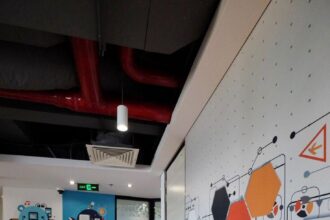 If you haven’t given much thought (yet) to Pinterest, that’s not surprising.
If you haven’t given much thought (yet) to Pinterest, that’s not surprising.
 If you haven’t given much thought (yet) to Pinterest, that’s not surprising.
If you haven’t given much thought (yet) to Pinterest, that’s not surprising.
Although the three-year-old social media site has become wildly popular over the past few months, the huge majority of Pinterest fans are women from twenty to thirty-five – and most of the image boards created on Pinterest are focused on “life-style” topics such as fashion, gardening, home décor, travel, and food.
Of course, an emphasis on lifestyle does not rule out an interest in more serious topics. But the whole point of Pinterest is finding and sharing images – and strictly speaking, business analytics is not that photogenic. With one exception: infographics.
First, a snapshot of Pinterest:
Would-be Pinterest members need to request invitations, which may take a day or two to arrive. But anyone can search and browse the images (called “pins”) that members have saved to their collections (“pinboards”). Members usually build their boards around themes, and Pinterest users can “follow” boards that interest them; “like” and comment on individual images; “repin” images to their own boards; and “share” images via email or Twitter. While Pinterest has a rule against commercialization of the service, consumer brands are rapidly establishing a presence – and a recent study found that Pinterest now accounts for more product referrals than Twitter or Google+ (though Facebook remains far ahead in this area).
There are not many Pinterest boards devoted to science, technology, analytics, data, or similar topics. But there are some very interesting collections related to infographics and data visualization. For example, these pinboards from Mashable, The Next Web, and Matters of Grey. And these from individuals Pinterest collectors Jon Hibbins, Grant Eull, and Crystal Matthew.
What’s the value of Pinterest for data professionals? Anyone who creates or uses data visualizations can find inspiration in the wide variety of infographic pins, conveniently brought together from many different sources. And it’s easy to follow an interesting pin back to its source, where there might be other worthwhile material. For example, one pin link led to this review of Manuel Lima’s fascinating book “Visual Complexity: Mapping Patterns of Information.”
Pinterest is also a handy tool for capturing and cataloging images as you come across them online. A “Pin It” button installs on your browser toolbar, enabling you to add something interesting to any of your boards in seconds.
And don’t discount the window-shopping appeal of Pinterest. For collections that focus on the latest geek-goodies, check out this Sony Electronics post: “Top Technology People on Pinterest.”
Next Steps:
- Subscribe to our blog to stay up to date on the insights and trends in business analytics and how to use infographics and data visualization to effectively represent complex business data.
- Download this complimentary ”5-Minute Guide to Business Analytics,” and learn how user-driven analytic or data discovery technologies help business and technology users more quickly uncover insights and speed action.






